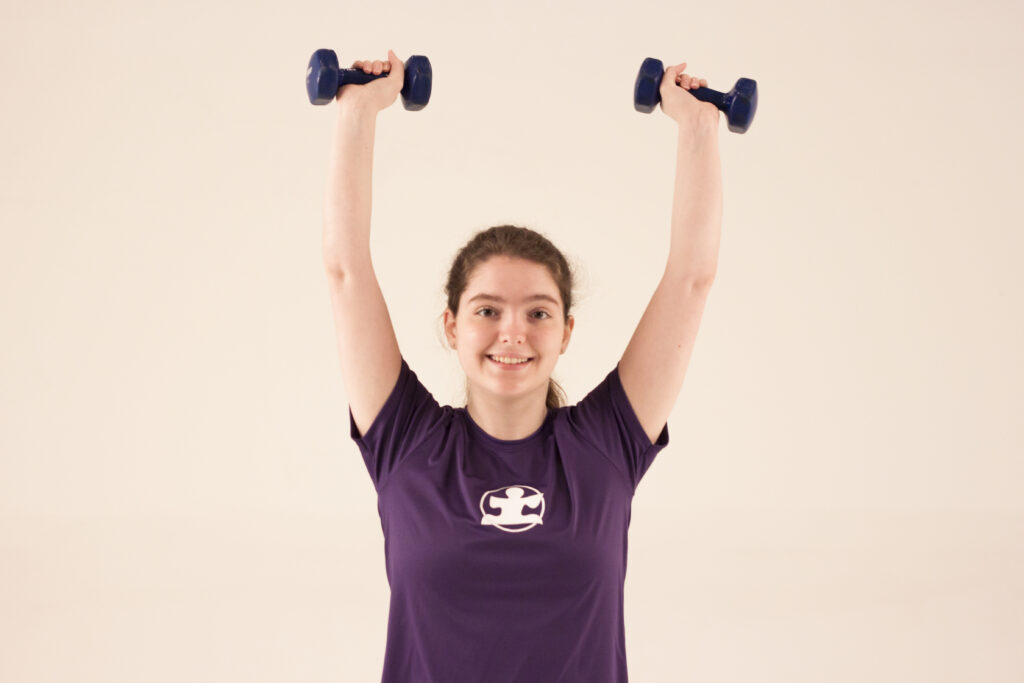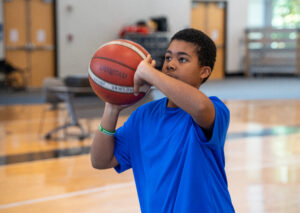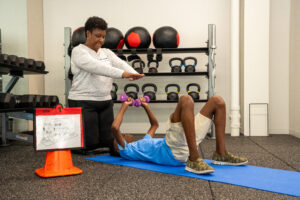
Physical activity is one of the most impactful interventions for health and wellness, offering benefits such as improved physical health, enhanced motor skills, better sensory regulation, and positive impacts on mental health. Regular physical activity can help manage stress, anxiety, and behavioral challenges, contributing to a higher quality of life.
However, individuals with autism and related disabilities are often marginalized in typical gym settings, making it difficult to obtain the necessary physical activity. Schools frequently focus on sports rather than developing lifelong exercise routines, which may not set these individuals up for success. While some Individuals on the spectrum may enjoy sports, others may find them overwhelming. Let’s discuss the difference between sport and exercise, and how to assist autistics in developing lifelong wellness routines.
“While some Individuals on the spectrum may enjoy sports, others may find them overwhelming.”

Competitive activities with specific rules and objectives (e.g., soccer, basketball, tennis).
Emphasizes teamwork, strategy, and skill development.
Typically conducted in a group setting, which can be challenging for individuals with autism due to social interaction and sensory overload.
We have a Visual Exercise System Sport Package at our Store

Broad range of physical activities aimed at improving health and fitness (e.g., walking, swimming, yoga).
Focuses on individual fitness goals and overall well-being.
Can be done alone or in a non-competitive environment, making it more adaptable to the needs of individuals with autism.
Social Interaction:
Team sports require communication, cooperation, and social engagement, which can be challenging for some individuals with autism.
Sensory Overload:
The noise, crowds, and rapid movements in sports environments may overwhelm individuals with sensory sensitivities.
Unstructured:
Many sports activities are unpredictable. Individuals with autism thrive in structured routine environments and often have difficulty adjusting due to rigid behaviors.
Pressure and Competition:
The competitive nature of sports can induce stress and anxiety, making participation less enjoyable for some individuals.
Sports can be a great way to motivate individuals to participate in physical activity, however, they usually have an expiration date. While participation in sport often ends after high school, exercise is a lifelong activity that can be sustained indefinitely. This distinction is important for individuals with autism, as it emphasizes the creation of lasting habits over temporary engagements.
“While participation in sports often ends after high school, exercise is a lifelong activity that can be sustained indefinitely.”
Conclusion
Physical activity is essential for the well-being of individuals with autism, providing numerous benefits such as improved physical health, better sensory regulation, and enhanced mental health. Sports pose challenges like sensory overload and competition-induced stress. In contrast, exercise provides a more adaptable and lifelong approach, focusing on individual fitness and overall well-being.
To support individuals with autism effectively, it is crucial to create lasting exercise routines.By addressing the unique needs of individuals with autism, we can develop physical activity programs that enhance their physical health and quality of life, empowering them to achieve their full potential both physically and mentally.
“By addressing the unique needs of individuals with autism, we can develop physical activity programs that enhance their physical health and quality of life, empowering them to achieve their full potential both physically and mentally.”
Let’s Get Moving Together
Schedule a demo with one of our team members and start making a meaningful difference in the lives of the people you serve today.
We use cookies to enhance your experience on our website. By continuing to use our site, you agree to our use of cookies.